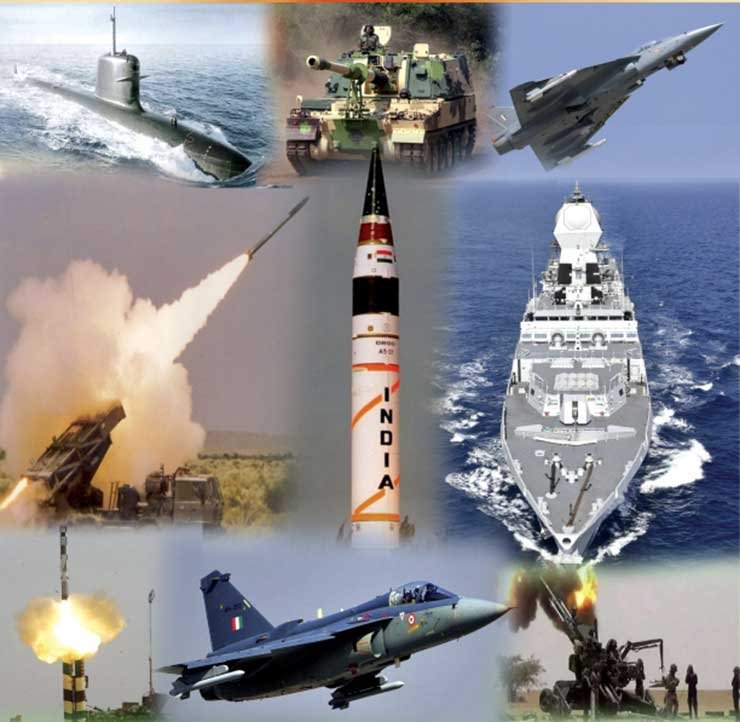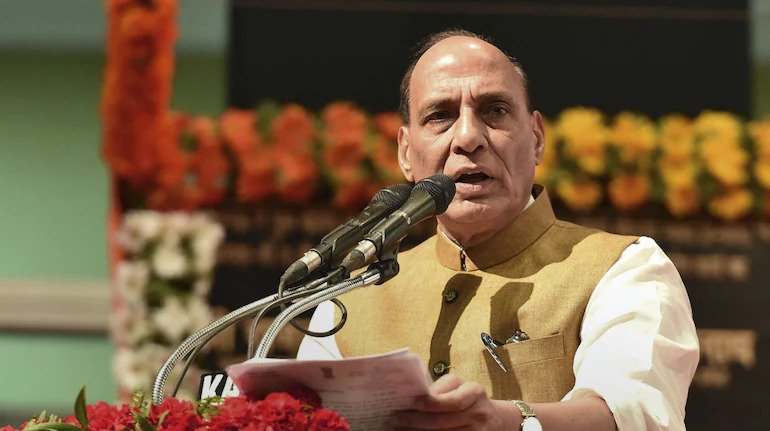
India’s defence acquisition regime is currently governed by Defence Acquisition Procedure 2020 (DAP 2020). It came into effect on October 1, 2020, superseding Defence Procurement Procedure 2016 (DPP 2016). Like all its previous versions, DAP 2020 is a curious mix of policies and procedures applicable to procurement of equipment, weapon systems, force multipliers, and various other platforms -or, simply ‘capital acquisitions’- for the armed forces and the Indian Coast Guard.
The current DAP 2020, already updated twice in November 2021 and April this year, is to remain in force till September 30, 2025, unless ‘reviewed’ – implying replacement by another version – earlier. There have been seven such reviews since 2002 when the first DPP was promulgated by the Ministry of Defence (MoD). This was among several ‘reforms’ carried out on the recommendation of the Group of Ministers on National Security System in the wake of the 1999 Kargil war. The objective of the DPP/DAP has remained unchanged over the years.
‘The primary objective of this procedure’, declared DPP 2002, ‘is to ensure expeditious procurement of the approved requirements of the Armed Forces in terms of (the) capabilities sought and time frame prescribed by optimally utilising the allocated budgetary resources … (and demonstrating) the highest degree of probity and public accountability, transparency in operations, free competition, and accountability… (while keeping in mind) the goal of self-reliance in defence equipment’.
Later editions expanded the objective to include MoD’s intent to provide a ‘level-playing field’ (to the private and public sectors) and declared that ‘self-reliance in defence equipment production and acquisition will be steadfastly pursued as a key aim’. The objective set out in DAP 2020 has been elaborated further by including the declaration that its ‘ultimate aim (is) to develop India as a global defence manufacturing hub.
Twenty years of pursuit of the same objectives, and past two years of focus on developing India into a global manufacturing hub, constitute a reasonably long enough period to assess the outcome of the policies and procedures devised to achieve those objectives.
In a broad sense, and going by the objectives stated in DAP 2020 and earlier DPPs, the results could be assessed on five counts: procurement of the defence materiel within the prescribed time frame; ‘optimal’ utilisation of the allocated budget; probity, accountability and transparency in the procurement process; free competition and a level-playing field for all vendors, and self-reliance in defence manufacturing.
The ‘broad’ timeframe prescribed in DPP 2016 required a procurement contract to be signed in the normal course within 70 to 114 weeks from the time the acquisition proposal was approved in principle, referred to as ‘Acceptance of Necessity’ in the official jargon. In DAP 2020, this timeframe was reduced to 62 to 106 weeks. An additional 12 weeks are permitted if the acquisition involves winter trials. As for the proposals initiated under the Fast Track Procedure, DAP 2020 requires the contracts to be awarded within 122 to 216 days of their initiation, and the supplies to be made within 3 to 12 months thereafter.
No official data is available on the average time it takes for the contracts to be finalised in real practice. However, disparate information furnished by the MoD to the Standing Committee on Defence and in reply to the parliament questions shows that on average 50 contracts were being signed every year between 2015-16 and 2018-19. This average has come down to around 45 contracts per year going by the data for the subsequent years up to June 2022, which includes the post-DAP 2020 period. These averages may, or may not, be a true indication of the impact of DAP 2020 on finalisation of contracts within the timeframe envisaged therein, but it is indicative of the slow pace at which new contracts continue to be finalised.
More definitive conclusions about DAP 2020’s impact on conclusion of contracts within the prescribed timeframe cannot be drawn unless the MoD routinely discloses the relevant data and information. Voluntary disclosure of information at regular intervals as regards the status of the major, if not all, acquisition programmes is also necessary for assessing DAP 2020’s impact on probity and accountability in the procurement process.
Such voluntary disclosures will make life easier for the vendors who often complain, albeit privately, of being in the dark about the MoD’s decision-making process. Being as transparent as possible would be in the spirit of the Right to Information Act, 2005 which is intended to ‘promote transparency and accountability in the working of every public authority’, in large measure through voluntary disclosures.

The overall objective of DAP 2020 includes free competition and a level-playing field for all vendors. Though unexceptionable, these are amorphous and unquantifiable concepts, not easily implementable in the context of defence acquisitions. Most of the acquisitions by the MoD have been -and continue to be- through limited tendering confined to two or three vendors or through a single source. The latter is particularly true of acquisitions from the United States through under its Foreign Military Sales programme.
Level-playing field for the public and private sector companies too is a difficult goal to achieve. Presently, there are 16 Defence Public Sector Undertakings (DPSUs), including seven created following corporatisation of the 41 ordnance factories which were managed by the Ordnance Factory Board. Given the fact that defence is a monopsony and there is perpetual shortage of funds for procurement of capital goods and services, the private sector will have to contend with the DPSUs which have a competitive edge over the private sector and, more importantly, are unlikely to be thrown under the bus by any government for a variety of reasons.
This brings up the question whether the limited budget allocated for capital acquisitions is being utilised ‘optimally’ as this too forms a part of DAP 2020’s objective. This is important, considering that the gap between the requirement projected by the armed forces and the budgetary allocation has not only persisted but widened over the years. The gap during the current year is more than Rs one lakh crore, of which more than Rs 63,000 crore is under the capital outlay for the services.
Optimisation is possible only through efficient planning, but this has traditionally been a weak area. The DAP 2020 envisages a revised three-tiered defence planning architecture: a 10-year Integrated Capability Development Plan (ICDP) consisting of two 5-year Defence Capability Acquisition Plans (DCAPs), with the latter being broken down into 2-year roll-on Annual Acquisition Plans (AAPs). The AAPs form the basis of the actual acquisitions by the MoD.
There is no indication whether financially viable ICDP and DCAPs have been formulated in the last two years since the promulgation of DAP 2020, but the AAPs continue to be formulated. It is difficult to say to what extent these AAPs are based on financially viable prioritisation of acquisition proposals without which optimisation of budget is not possible.
A great amount of attention is currently being paid by the MoD to achieving self-reliance in defence manufacturing through indigenisation. Many of the new features of DAP 2020, such as introduction of ‘innovation’ by the Indian entities as a mode of procurement, are intended to promote this objective. Some measures taken subsequently, such as notification of Positive Indigenisation Lists to progressively ban import of defence materiel, earmarking of 68% of the capital budget for local procurement, and reservation of 25% of the R&D budget for the Indian companies, too are intended to promote self-reliance. Eighteen major platforms have also been identified by the MoD for industry led design and development by the Indian industry.
Much of this remains work-in-progress. In fact, the scheme for expending 25% of the R&D budget on research and development by the Indian industry is yet to be notified, six months after it was announced by the finance minister in her budget speech. Meanwhile, MoD continues to measure the success of its policies concerning self-reliance with reference to the number of acquisition contracts awarded to the Indian companies.
In reply to a question in the Lok Sabha on July 29 regarding self-sufficiency -a term that is used interchangeably with self-reliance, despite the subtle difference between the two- it was stated by Minister of State Ajay Bhatt that between 1st of April 2019 and 30th of June this year, 161 contracts had been signed for capital procurement of defence equipment, of which, 107 contracts accounting for 70% of total value of all the contracts had been signed with the Indian vendors.
This cannot be a true measure of self-sufficiency or self-reliance -terms used interchangeably despite a subtle difference between the two. The real test of self-reliance is whether all critical technologies needed to manufacture the equipment required by the armed forces are available within the country, as access to such technologies, if denied by the foreign countries in difficult times, could upend India’s quest for self-reliance.
It is necessary to strategize India’s march towards self-reliance in defence production by evolving financially viable plans and ensure that the policies and procedures facilitate the realisation of the ‘ultimate goal’. This requires reorientation of the present approach which focusses more on the policies and procedures than the underlying objectives.
– The writer is Ex-Financial Advisor (Acquisition), Ministry of Defence.








